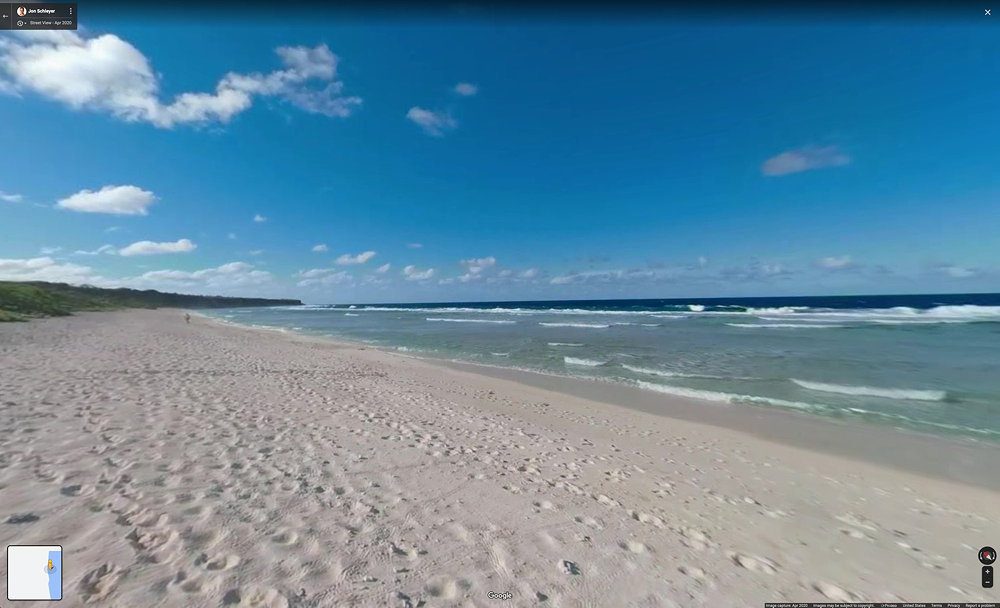PLASTICS & THE ENVIRONMENTD
DO PLASTICS CAUSE LITTER?
evidence & perspective from the leading INDEPENDENT expert
We are told that plastics are to blame for litter but is that true? What does the science say? Do plastics cause litter? Find the answers here.
We Blame Plastics for Litter
But Do Plastics Cause Litter?
People are concerned that plastics create litter, which naturally leads to the suggestion that we should reduce our use of plastics. Furthermore, because littered items often come from large, recognized brands, it has been said that the brands are responsible for litter. Some believe that they must be made to pay for the clean-up via so-called extended producer responsibility (EPR) programs.
Is this an accurate diagnosis of the problem? Do plastics cause litter and are the proposed solutions likely to work? Let’s investigate first with some anecdotal evidence but followed of course with hard scientific evidence.

Plastic & Litter – The Evidence
Anecdotal evidence on plastic litter
Before delving into the science, let us consider what we know about litter from our own experience. When I go for a walk, I do see some litter. Not much, but it is there, and it is ugly and irritating. Cigarette butts are most common, but I also encounter candy wrappers, lollipop sticks, soda bottles, cans and cups and sometimes a coin, which I pick up, of course because it has value.
The litter you and I see every day is made up of paper, plastic, metal glass and even organic matter courtesy of pets and wildlife. So, we know that litter is made up of all materials, not just plastic.
Let us apply some more common sense – I wish it were more common, but that’s a topic for another day. Here is an example many of us can relate to. I enjoy a glass of wine every evening and I put the cork on a shelf in the kitchen. Over the years, quite a collection of corks has developed. So what? The point is that every one of those corks is still there, even after years. Not one of them has “made their way” outside or into the environment. Why not? Because inanimate objects can’t “make their way” anywhere without our help. They will never become litter unless I decide to make that happen. Common sense would seem to tell us that litter happens when people misbehave. Does science agree?
Scientific evidence on plastic litter
Is it really true that people cause litter? We should be careful not to trust too much in anecdotes because although they can be powerful, they can also be used to mislead. Do we have any solid evidence on this matter, so that we can be sure what the true cause of litter is? It turns out that scientists have performed many detailed studies on litter. Study after study shows the same conclusion which is that ~80% of litter is dropped intentionally by people. Scientists literally watch as people throw, flick and discard their trash on purpose. Here is an example of just how comprehensive these studies can be – observations of littering were made on about ten thousand individuals at 130 sites across the USA.
“When combined, an estimated 81% of observed littering occurred with intent.”
They went on to specify the types of litter – of almost 2000 recorded events, the most frequent were cigarettes (340), mixed trash (337), and paper (272). Clearly, plastic is far from the only or major contributor. The littering behavior was 85% dependent on characteristics of the individuals such as age, gender, attitudes, and motivation and only 15% depended on the characteristics of the site, such as the pre-existing presence of litter or the availability of trash receptacles. Interestingly, males were more likely to litter than females.
I often hear that littering occurs because there are not enough receptacles. Is that the case? The study revealed that the littering rate was 30% when receptacles were 60 feet apart or more and the average littering rate was 17%. Littering rates were reduced considerably when more receptacles were added and the minimum amount of littering was 12%, when receptacles were 20 feet apart or closer. This tells us that no matter how many receptacles are provided, significant littering will still occur because some people are hopelessly inconsiderate. Even with a receptacle placed every 8 steps, it is just too much work for those individuals to make the effort.
Several studies have shown the path to reduced litter. The proven methods are:
Beautification – the presence of existing litter increases people’s tendency to add more litter. Tidying up existing litter reduces the subsequent amount of litter deposited.
Opportunity – providing easily recognized and accessible receptacles, with clear messaging helps greatly, up to a point.
Messaging – although not generally effective, media placements should emphasize that the majority do not litter, and the society frowns heavily on littering and litterers.
Litter on Beaches
Accessible beaches
We have heard so much about beach litter. People usually feel that it is washed up there from the ocean. Is that the case, or is it deposited directly on the beach? Again, we find that several substantial studies have been done and the conclusions are in agreement. They all show that beach litter comes mainly from the people on the beach. They also propose that because beach litter is caused by beachgoers, the solutions are based on change behaviour through education and adding more litter bins.
“The beaches with lower levels of urbanization also had smaller quantities of anthropogenic litter. Items related to beach users were predominant for most of the beaches. The confirmation that beach users are primarily responsible for the generation of anthropogenic litter may contribute to the development of strategies to reduce the problem, such as installing bins and distribution containers for anthropogenic litter collection and designing educational campaigns for beach users.”
It has been found that people will litter a beach until it is so ugly that they don’t want to go there anymore. At that point they go find a new, clean beach and proceed to ruin it too.
“In coastal California, visitors are reported to travel longer distances to avoid beaches with more waste and in Brazil, a recent survey reports that 85% of beachgoers will avoid beaches with high litter loads (>15 pieces per m3). This is also interesting in light of numerous reports (and anecdotal evidence) that beachgoers themselves can be a contributing source of debris.”
Such beaches are a major source of income for the local businesses and government, so it would make sense for them to spend some of the tax money they collect from the beachgoers to pay for effective clean up, otherwise the people will go elsewhere, and their income will diminish.
Litter on remote beaches
The only beaches that most people ever visit are, unsurprisingly, beaches that are easily accessible. The public sees these highly littered beaches and they naturally assume that all beaches around the entire globe look the same. But is that assumption valid? Scientists have visited remote beaches i.e. ones that tourists and locals have trouble reaching, for several decades to see how they look.
It turns out that isolated beaches display much less litter and that is dominated by fishing nets and ropes, rather than the types of litter found on beaches frequented by people. The reason is simple, the litter is washed ashore from the surrounding ocean.
Henderson Island is a remote, uninhabited island in the southern Pacific Ocean. It became famous when it was claimed that an average of 3,570 new pieces arrive each day on one beach alone and that “The density of (plastic) debris was the highest recorded anywhere in the world”. They went on to say that there’s no point to attempt a clean-up because so much new litter is washed up every day.
I was surprised to hear that so much was washing up when other studies say the opposite. Dr. Patrick Moore said that the environmentalists’ claims were a scam and in his book showed satellite images of the island showing that the beaches are actually litter-free. As a former long-time President and Director of Greenpeace, he now works to expose them by comparing what they say to the evidence.

He says that their favorite trick is to pick somewhere so remote that no-one can check what they are claiming. I checked what he showed in his book and sure enough Google Maps™ satellite images show that Henderson Island actually has clean beaches. I also found that Google Street View™ allows you to virtually walk up and down the pristine white sand beaches with hardly a piece of litter to be found. See the image and tell me what you think. Does that look like the most polluted beach in the World to you? Click here if you want to check the beaches of Henderson Island for yourself.
It appears that Dr. Moore was correct, and this report of a super-polluted remote beach was just a con job. In his book, Dr. Moore comprehensively debunks the Pacific Gyre myth including an image often used to depict the gyre and reveals that it is actually debris floating after the Japanese Earthquake and Tsunami in 2011. Another lucrative piece of misinformation spread by people more interested in lining their own pockets than in the environment.
Litter in the Oceans – Gyres
How about litter in the oceans? Is that any different? We certainly hear plenty about floating islands of trash in the oceans – the so-called gyres. What do scientists know about all of this? Out at sea, there is no way for scientists to watch littering take place as it happens. Instead, they analyze the litter itself to work out what is there, how much is there and where it came from.
When I heard about the ocean gyres I was amazed and appalled to learn that there are huge floating islands of plastic swirling around in the oceans. The image I created in my mind was truly horrific. There is a problem with that image though. It isn’t true. Scientists have been studying ocean litter for decades. They sail ships up and down taking millions of samples and analyzing them and they report with 100% certainty that the gyres are not floating islands of plastic at all. In fact, even the captain who discovered the gyres says that they are not floating islands at all but areas with more plastic. How much is there? Well, not enough so that you can tell when you sail through a gyre. Not even enough so that swimmers would notice it.
“A lot of people hear the word patch and they immediately think of almost like a blanket of trash that can easily be scooped up, but actually these areas are always moving and changing with the currents, and it’s mostly these tiny plastics that you can’t immediately see with the naked eye.”
I was surprised to learn that the gyres are not what we were told. The government expert is telling us that there are no floating islands of waste. The NOAA are not the only ones to point out the non-existence of the so-called “patches”. Scientific studies have reported it as well.
Even scientists in peer-reviewed articles explain that we have all been lied to. People have looked for the floating islands using satellites but they are not there. I realize that it is hard for some people to accept that this island story is just a myth. Captain Charles Moore, who first reported the gyres had this to say in his book:
“Let it be said straight up that what we came upon was not a mountain of trash, an island of trash, a raft of trash, or a swirling vortex of trash—all media-concocted embellishments of the truth.”
Captain Moore has request all of the time from journalists who want him to show him the patches so that they can take a picture. He has to tell them that there’s nothing there to take a picture of. So, how did the myth come about? We are not the only people to ask that question. Kim De Wolff got her PhD by investigating the evolution of the first gyre reports and how the truth became so massively distorted over time. A German publication called Geo first reported the gyre as a “carpet” of plastic but when the Russian newspaper Pravda covered the story, they transformed the carpet into trash island. Ironically, the Russian word Pravda means truth – not in this case though.
Trash Island discovered in the Pacific Ocean, Pravda Online, February 24th, 2004
One more quote from the PhD thesis sums up the reality but the image of an island is just too compelling for most people to relinquish.
“I was shocked by how small the pieces were. I was shocked that so many pieces were so tiny and that everything was degrading so quickly.”
Dr. De Wolff interviewed leading gyre scientists who expressed frustration that organizations including Greenpeace and the New York Times continue to talk about islands even when they do not actually exist. The experts point out that presenting gyres as islands is harmful because people propose clean-up solutions based on that false information. For example, people propose that we tow away the island. Such solutions are doomed to fail. I agree with those scientists Dr. De Wolff interviewed – the whole point is to find the facts, so that we can find solutions that actually work.
You may have seen articles showing ships that sail around attempting to collect the litter in the gyres. One recent post said that the The Great Ocean Cleanup had spent two years and millions of dollars and their three-day trial collected just 9 metric tons of litter. This is a prime example of wasted time and money. The US Government calculated that this approach cannot work. Furthermore, it is not green to have hundreds of polluting ships sailing around to collect small fragments in a very dilute form. Their efforts to clean the environment actually cause far more harm because of all the diesel used, CO2 generated and so on.
“We did some quick calculations that if you tried to clean up less than one percent of the North Pacific Ocean it would take 67 ships one year to clean up that portion. And the bottom line is that until we prevent debris from entering the ocean at the source, it’s just going to keep congregating in these areas.”
An analogy would be to imagine cleaning up a deck of playing cards. It is quickest and easiest to leave them in the pack. If you drop the cards then on a table, then they take longer to collect, arrange and put back in the pack. Now imagine that you take them up in a helicopter and drop the cards. How much time and energy would you waste collecting them now? That’s why cleaning up the gyres cannot work – the litter is too spread out.
Once again, we have been misled and not only that, groups perpetuate the myth for their own benefit. According to scientists, the gyres about 50% by mass discarded fishing gear, so the fishing industry has a lot to answer for. Discarded nets, so-called ghost nets, entangle and harm marine life. Some people blame that on the plastic that the net is made of, but that argument doesn’t hold water (pun intended). Firstly, the blame is on the fishing industry for abandoning the net. Secondly, abandoned hemp rope nets, first introduced over 1000 years ago, harm marine life as well – so the problem occurs no matter what material the net is made from.
There is another topic that confuses me as a scientist. There are incredible amounts of toxic chemicals, sunken ships leaking oil, unexploded bombs, nerve toxin and so on in the oceans. There is also a phenomenal amount of beer cans, ceramics, glass, cardboard and much more. Scientists have looked at the ocean bed and they know exactly what’s there. Why then do people only talk about the plastic? Probably because it floats and the rest sinks. Maybe it’s a case of “out of sight out of mind” but if people really did care about what’s in our oceans, then they should start talking and acting on the rest of it too.
For years we’ve been told that millions of tons of microplastic enter our oceans from rivers each year. However, when they went to look for all that plastic, it wasn’t there. Scientists were confused. They went back and checked their estimates of the amount of plastic entering the oceans and found they had made a huge mistake. The “missing plastic” had been found. Embarrassing as it must have been for them, they explained their error and gave the new correct number. The latest estimate for the amount of microplastic entering oceans from rivers is not millions of tons, it is 6000 tons.
How was this amazing good news received by NGOs concerned about the ocean? How was it received by the public and politicians? One might expect that they were jubilant and relieved that the pollution problem was 1000x less than they had thought. Strangely, they have studiously avoided any mention of the true estimate being 1000x less. Why? Because they can’t get our donations if we find out. They need us to believe that there’s an emergency, so that we open up our wallets for them. Even now, they repeat the 10 million tons a year figure – fiction is more lucrative than fact.
“The amount of plastic discharged by rivers to our oceans and seas has been overestimated by two to three orders of magnitude.”
Plastic Litter – Perspective and Context
Too much of the talk around plastics fails to consider the broader picture. The result is misdiagnosis of the problem and implementation of policies that make the problem worse instead of curing it. For example, we talk only about plastic litter as though that were the only kind. Of course, we know with certainty that other types exist as well. Even if all plastic litter were to vanish overnight, the majority of the problem would remain.
Another aspect which never receives any attention is what would happen if we for example replaced plastic bags with paper bags. We know that the paper bags are less green and weigh 10x more. That means ten times more litter by weight. Is that a good idea? Similarly, replacing plastics with other materials means far more litter by weight and many of those materials take far longer to degrade than plastics do. Glass, ceramics and metals can take a tremendously long time to degrade. So, the idea that replacing will solve the litter problem is fiction. What about paper though? Doesn’t that degrade quickly? Not necessarily. We have paper documents that are over 1000 years old and still legible. Scientists calculate that paper takes about 2700 years to degrade under some conditions, for example when it is dry. Ironically, common plastics like PE and PP degrade far faster under those conditions – to read more about the rapid degradation of plastics in the environment see this page. A polypropylene film degrades and crumbles in less than one year under the same conditions that paper takes hundreds of years to degrade.
Looking at the alternative materials, we can see that focusing on plastics as a solution to litter is naive and non-productive.
Conclusions and Policy on Plastics and Litter
Litter is caused by people
Blaming companies or materials is unwise, unjust and counterproductive
Plastic replacements are less green and increase litter
Looking at the evidence, we see incontrovertible proof that litter is caused by people not by materials or by companies. That is a crucial point, because once we know that the problem is due to people, we can be certain that the only way to bring about change is to modify the behaviour of those people. Not only that, but we know what actions are scientifically proven to be effective:
The presence of existing litter increases people’s tendency to add more litter.
Tidying up existing litter reduces the subsequent amount of litter deposited.
Providing easily recognized and accessible receptacles, with clear messaging helps greatly, up to a point.
Media placements should emphasize that the majority do not litter, and the society frowns heavily on littering and litterers.
As media placements were said to be rather ineffective, I would add education of the young and heavy fines for adults to the list of helpful action we could take.
It was also revealed that influential NGOs and the media continue to spread misinformation because that benefits them. A prime example is the gyres that are alleged to be floating islands of garbage but are not actually there, even according to the captain who first reported them. Unfortunately, bad information harms the environment because once we misdiagnose a problem, we have little chance of solving it. In fact, we see organizations wasting vast amounts of time and money on false “solutions”.
We know that plastics bans will not solve the litter crisis because there is no evidence that a litterer will choose to drop a PET bottle but not drop a metal can. We know that such people will misbehave no matter what material an item is made of.
Extended producer responsibility (EPR) has been suggested but we know that is not the solution either. Firstly, because it is not the producer who drops the litter, nor is it their responsibility to pick it up. Secondly, we have already paid taxes for public trash cans, clean up and disposal. EPR systems would force us to pay twice for the same service – once in our taxes and a second time in increased prices because the manufacturers will certainly pass the cost of EPR on to consumers. Do you want to pay twice?
On the other hand, deposit schemes are proven to be highly effective. They do not cost the consumer extra because the deposit is returned when the empty bottle is handed back. However, by assigning a monetary value to the potential source of litter ensure that it will be transported back for recycling. These schemes have worked for decades for example aluminium cans use them and so do PET soft drink bottles in several countries. Return rates of over 95% are commonly achieved.
“you can be for the environment, or against plastics, but not both”.

Dr. Chris DeArmitt is a renowned independent scientist and keynote speaker with decades of experience solving tough technical challenges for some of the world’s leading companies. He is a Fellow of the Royal Society of Chemistry and Fellow of the Institute of Materials, Minerals and Mining. He is also a Chartered Chemist with a long list of publications, presentations and patents to his name. His review of the science around plastics and the environment was performed unpaid to preserve impartiality.
Income 2024 : ~ 60% NAICS 424690 Chemicals, ~30% NAICS 423990 Durable Goods, 10% NAICS 541110 Legal, 0% NAICS 325211 Plastics Composition varies over time



